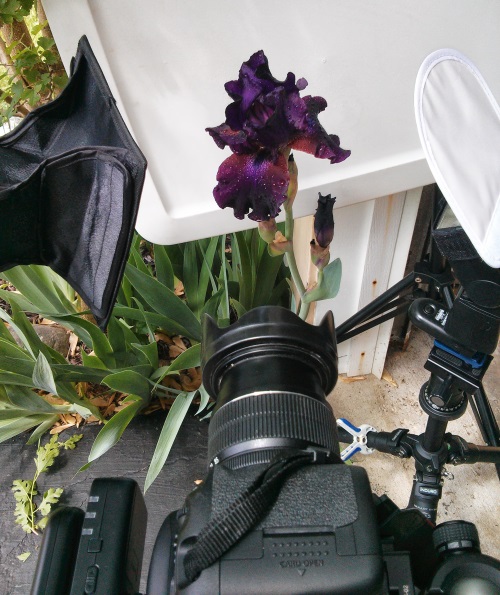The rise of the third parties
A long time ago, I bought a 35mm camera kit — one of those deals where you got a couple of zoom lenses, a bag, and a bunch of other junk. The telephoto lens that came with it was made by a company called Kalimar; I think it was probably something like an 80-200mm zoom. At the time, I didn’t really understand what made a good lens, and why people tend to prefer lenses from the company who makes their camera, but I remember the lens treated me pretty well. Clearly, third-party equipment has been around for a while.
Since I’ve renewed my love of photography more recently with digital equipment, though, I’ve noticed a distinct bias against third-party equipment. “Buy it if that’s all you can afford,” some people say, “but understand that everything made by a third-party is cheaper and of lower quality than stuff made by Canon / Nikon / Sony / etc.”.
This bias is really badly oversimplified, of course, so if you’re one of those people who really think this way, you really need to keep this to yourself, because the truth has always been a little more complicated than this. I’m really happy with the amount of quality improvement and yes – even innovation that’s coming out of third-party manufacturers these days. Here’s a quick look at some of the more interesting developments in lenses and lighting recently:
Lenses
Lens lineups from all manufacturers range from “affordable” to “pro”, and you can find third-party offerings scattered in and among all of those lineups. Recently, though, we’re starting to see some really exciting third-party lens offerings that have the potential to start stealing lunch money from the big boys. Among these:
- Tokina’s 11-16mm f/2.8 wide-angle
zoom lens. You can buy wider lenses, and you can buy faster lenses, but you can’t touch this combination from Canon or Nikon. Honestly, for landscape use, the fast f/2.8 aperture isn’t a big selling point, but if you’re interested in using it at night (say, for star photos or auroras), the fast aperture is unmatched. This lens is on my shopping list.
- Tamron’s 17-50mm F/2.8
zoom lens. A friend of mine has had this lens for years, and he absolutely raves about it. The non-stabilized version of this lens is considered one of the sharpest lenses available for crop-sensor cameras, you can’t get a fast zoom anywhere near this price from Canon or Nikon.
- The Sigma 120-300mm f/2.8 DG OS
fills a unique range for long zooms. Canon and Nikon both have fantastic 70-200 f/2.8 lenses – these are go-to lenses for sports and event shooters, and even for portraits. When you get longer than that, though, the selection thins out a bit. Watch the sidelines at a ball game, and you’re sure to see 300 or 400mm primes all over the place because they’re really the only option to get that combination of range and fast aperture. This Sigma, though, is fast, has the versatility of a zoom, and at $3500, is a really compelling option to those big primes.
- Speaking of Sigma, if you haven’t seen their USB dock
, check out this video. For lenses that support this feature, you can program the lens with microfocus adjustments at different focal lengths, and you can adjust the performance of the autofocus motor. Pretty cool stuff, and you can only get it from Sigma.
- Tamron introduced a great 24-70mm f/2.8 stabilized
lens last year. This lens is notable not just for its competitive price, but because it’s got image stabilization, curiously missing from both the Canon and Nikon version of this lens.
- Tamron is making waves this spring with the introduction of their 150-600mm lens (an update to their previous 200-500mm
lens). Early tests (insert review links) against Canon’s 100-400mm L
zoom (insert Amazon link) show it to be at least as sharp as Canon’s lens, with a bonus of an extra 200mm of reach and an extra $500 or so in your pocket. Not bad. Nikon shooters are probably going to stack this up against their 80-400 lens, which is excellent, but around twice the cost of the Tamron.
Lighting
The other big area where third parties have made inroads lately is in lighting — namely, strobes and triggers. Flash triggers, especially, are somewhat unusual because one of the true class leaders here is a third party (Pocket Wizard), so I think there’s always been a bit less of a stigma for third party products when it comes to triggers.
Still, I’ve noticed a definite upswing in the quality and sophistication of third-party lighting equipment over the last several years. A number of years ago, I picked up a LumoPro LP160 strobe for my Canon DSLR, and while I was very happy with the build quality, it was very sparse in terms of features — both zoom and flash power were manually-controlled only, for instance. Shortly thereafter, I bought a set of Yongnuo RF-603C flash triggers, which were also fairly basic in operation. In both of these cases, though I didn’t get all the features I might have seen on a Canon equivalent, the prices were lower by a factor of three or more times.
More recently, though, I’ve seen manufacturers like Yongnuo stepping up with improved features on top of their competitive prices. When I heard they were coming out with a flash that was ETTL and HSS-capable (Yongnuo YN-568EX II) as well as a new trigger system that also supported ETTL and HSS (Yongnuo YN622C
), I was an early adopter. Again, I’ve been very pleased with the quality and the performance, and again, the price was well below that of competing Canon products.
A free lunch?
Although my experience with third-party equipment has been very good, it’s important to note that there can be bumps on the yellow brick road. Since some of the advanced functionality of these products is made possible only by using undocumented interfaces or signals, and neither Canon nor Nikon will guarantee compatibility with third-party products, now or in the future. In practice, this hasn’t been an issue for me, but it would be prudent to plan on testing third-party products for compatibility while you’re within the return period.
Another common issue — especially with lenses — has historically been a lack of consistency from one copy to the next. It’s really not unheard of to buy a third-party lens and find that performance measures like focus are just not quite as crisp as they should be. “You just got a bad copy,” is typically the prevailing wisdom, and more often than not, users find that a second copy of the lens fixes their issues.
Finally, if you do have a problem that requires a repair, third-party manufacturers tend not to have an extensive dealer or repair network to handle repair work, so you might have to live without your equipment a while longer than you’d expect from a name-brand repair facility. Bear in mind that in some cases, you’d literally be able to buy an extra copy of one of these lenses, triggers, etc., to use while one’s being repaired, and still be money ahead.
If you can live with some of these trade-offs, you might want to give third-party equipment a shot. There’s never been a better time to try.



Leave a Reply